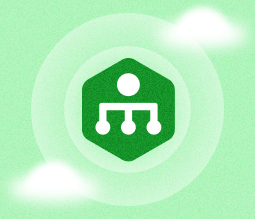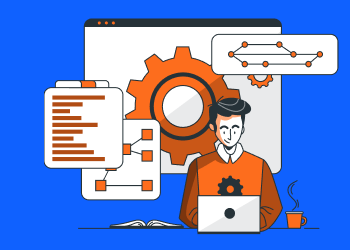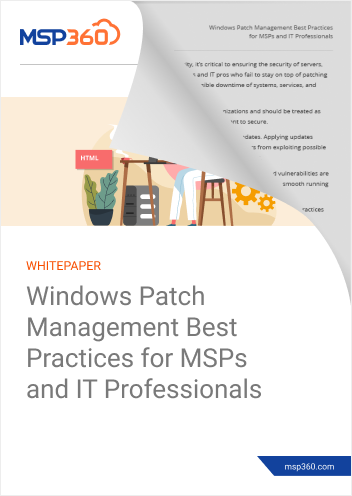Remote work environments have exclusively changed how organizations approach cybersecurity. This has fashioned a new tact where there is a greater need for patching and a renewed urgency to educate employees on the critical importance of patching and better security hygiene.
In one survey conducted by the Ponemon Institute on how organizations can reduce gaps in vulnerability response, it was found that nearly 60% of the data breaches occurred due to a missing operating system patch or application patch that was not applied despite the vulnerability being known.
From this study, it’s clear that prompt deployment of patches is a critical part of any effective cybersecurity strategy. In this article, we will focus on the need for patching as well as the negative impacts that would arise while working remotely from home, if mandatory patching isn’t integrated properly.
What is Patching in Patching Management?
To understand what patching management is, we’ll start by defining a patch. In simple terms, a patch is a set of adjustments to the code of the computer software you are using.
Patches are used to correct vulnerabilities (security patches) or bugs (bugfix patches) in the software. So, if an already released program happens to have a bug, a patch is created to correct the flaw removing the need to rewrite a new program altogether.
Patches can also be deployed to improve software capabilities by adding features (feature patches) or bring the software up to date – making it compatible with the latest hardware.
Some common areas that require patching include embedded systems, servers, mobile applications, operating systems, office software, and more.
Further reading Windows Server Hardening Checklist
With all these areas to manage, patching can become too boring to handle on your own given the sheer number of patches you’ll require to keep your system always updated.
In some cases, patching can even become an inconvenience that can potentially introduce other unprecedented issues. But it doesn’t have to be this way with a proper patch management strategy.
That said, let’s see what patch management is.
What Is Patch Management?
Patch management – as the name suggests – is an area in systems management tasked with managing these patches and keeping software on network devices and computers updated and capable of resisting cyber-attacks.
Basically, patch management includes activities such as: deciding which patches to install, ensuring that the patches are properly installed, testing whether the systems are working properly after installation, maintaining current knowledge of available patches, documenting all associated procedures.
Patch management can be done automatically using a dedicated patch management program or manually on a system-by-system basis.
Further reading Patch Management with MSP360 RMM
How Does Patch Management Work?
Patch management works differently for various systems. For instance, the way a patch is applied to a corporate network is different from how it’s applied to a mobile application that allows your customers to pay you directly through invoices and automatically records each payment in your account with the simple click of a button on your smartphone.
In a corporate environment, the software version remains consistent across all devices and computers. As such, organizations usually perform centralized patch management through a centralized patch management server.
Depending on the organization’s patch management policy, the server downloads and distributes the patches to other computers via the organization's network which helps conserve internet bandwidth.
Apart from automating patching, the centralized approach gives you more control over the process. For instance, you can decide which patches to ignore which ones to deploy by configuring the policy.
With a stand-alone system, on the other hand, each computer is allowed to run an automatic check periodically on the operating system and applications. If any patches are available, they are downloaded and installed automatically.
The Importance of Patching
There are various reasons why patching is critical while working remotely from home. They include:
Security
With hackers and researchers discovering new vulnerabilities, unpatched systems remain the favorite target for cybercriminals seeking to exploit known security weaknesses. Apart from that, they are also a soft target for malware infections.
As such, it is necessary to apply security patches as soon as they are issued by the vendor for effective cybersecurity. Security testing of applications and APIs, no matter which tool or method used, all comes down to dynamic or static evaluation. One of the best tools to use for this purpose is a Dynamic Application Security Testing (DAST) tool, which will search for vulnerabilities in your application while it is running.
Productivity
Patching ensures that all systems keep running as they should. However, technology can notoriously turn out to be fickle – and even the most minor software bugs can cause a computer to crash or interfere with the network.
These unexpected consequences can lead to low productivity among employees and time wastage. With automatic patching, however, you are assured of reduced downtime and productive employees.
Compliance
As more cases of cyber-attacks continue to grace our headlines every day, cybersecurity agencies continue to enact more legislation that requires organizations to comply with certain security standards. Some of these standards include:
- Health Insurance Portability and Accountability Act of 1996 (HIPAA): This cybersecurity act seeks to ensure that patients’ medical information is safe from loss or theft.
- Payment Card Industry Data Security Standard (PCI DSS): Protects against theft of credit card information.
- General Data Protection and Regulation (GDPR): This regulation requires organizations to protect the personal data and privacy of EU citizens.
Organizations that fail to comply with the regulations can attract massive fines or even jail time. Patch management ensures that you address these measures on time.
Now that you know the importance of patching, let’s look at how you can ensure that your remote work environment is safe from cybercriminals.
Remote Working Safety and Security
Aside from giving employees a better work-life balance and reducing the costs of business, the sudden shift to remote working environments has expanded the attack surface for cybercriminals.
As such, organizations have had to move extremely fast to mitigate cyber risks. Here are some tips that employees should take to reduce the risks of cyber-attacks in their remote environment while working from home.

Protect Devices with an Antivirus Solution
Most organizations will implement several measures to protect computers against malware infections. Some of these measures include restricting online access from unauthorized devices, prohibiting installations, installing powerful security solutions, and so on.
At home, providing this level of protection on your work computer or other devices can be a little bit tricky but not impossible. With a good antivirus solution, for instance, you could add another layer of defense by detecting and blocking malware.
One thing you should keep in mind, however, is that security software needs to be always up to date. So, security patches should be installed as soon as they are released. To get them on time, consider activating auto-updates from the software vendor or use a patch management tool such as Windows Intune if you are using Windows OS.
Use a Virtual Private Network
You might know of a VPN (Virtual Private Network) as a service that helps bypass internet restrictions, especially on streaming sites. But that’s not the only role it plays. A VPN also secures your online privacy by encrypting your information hence ensuring no one intercepts it.
This keeps away hackers, government agencies, and even your internet service providers.
A VPN can slow down your internet speed. So, if you want to hold video calls or any other activity such as sharing huge work files that require high bandwidth you need a reliable VPN provider.
Further reading Working Remotely: COVID-19 Raises the Standard for VPN Security
Backup Your Data
Data loss can occur due to hardware damage, human error, or malicious infections. Ransomware, for example, can wipe out an entire system crippling an entire organization.
Further reading Backup Security Measures: 5 Essential Steps
As such, there is a huge need to backup your data. One cost-effective way is to store it in the cloud. There are many cloud storage services that offer a plethora of options when it comes to customization, storage, and the backup schedule.
Further reading Patching up the Network: Why MSPs Must Start with Device Identification
Wrapping Up
Patch management is undoubtedly one of the key foundations of an effective cybersecurity strategy alongside vulnerability assessment. As such, organizations should not overlook the importance of these two processes in a bid to ensure that their systems as well as the employee data are protected from threat actors.









